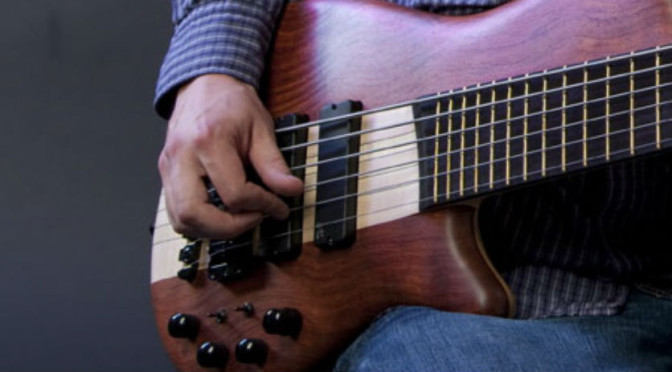How to Approach Playing Bass in Odd Meters and Time Signatures – Bass Practice Diary – 21st August 2018
This week I’ve been practising playing in odd meters and I want to briefly share my system for playing any unusual time signature. My system revolves around learning and reciting rhythmic phrases rather than counting beats, and if you use it properly it should make playing odd meters no harder than playing in 4/4.
What Are Odd Meters?
The term odd meter simply means any time signature that has an odd number of beats or subdivisions in a bar. Odd meters divide opinion amongst musicians. Some musicians (including me) love them and think they can flow and groove just as well as any groove in 4/4. Others hate playing them.
I want to share an approach that I use to playing odd meters. It’s actually not that different to my approach for playing in any meter, but I think that musicians who are not comfortable playing in odd meters often feel that they have to do something different when playing odd meters. And that might be the root cause of why they struggle with them.
Think About Rhythmic Phrases
What do I mean by rhythmic phrases? Every meter or time signature has a fixed number of subdivisions per bar. Check out my book Electric Bass: Improve Your Groove if you’d like to learn more about subdivisions and rhythmic structure.
The rhythmic structure of a bass groove comes from how you organise these subdivisions. I’ll use the examples from the video to demonstrate. The first one is in a very unusual time signature 15/16. Which means there are fifteen 16th note subdivisions in every bar.

The Method
In this example I’ve arranged the fifteen subdivisions into three groups of four and one group of three.
4+4+4+3=15.
If you’ve read my book or followed some of my previous videos you’ll know that I like to use Indian Konnakol syllables to recite rhythms. The syllables for a group of four subdivisions are Ta-Ka-Di-Mi and the syllables for a group of three subdivisions are Ta-Ki-Ta.
So, the rhythmic phrase for the above example is as follows.
Ta-Ka-Di-Mi Ta-Ka-Di-Mi Ta-Ka-Di-Mi Ta-Ki-Ta
It’s actually a very simple rhythmic phrase, even thought the time signature 15/16 might make you think of something very complex.
An even more simple arrangement of fifteen subdivisions would be five Ta-Ki-Ta’s. This creates the feel of a 5/4 shuffle.

How Can You Apply This System in Any Time Signature?
This idea can and should be applied to any groove in any time signature. Including the obvious ones like 4/4. It’s not always easy because there are much more complex rhythmic structures than the examples above. But the key is to understand firstly, what is the subdivision (8th notes, 16th notes, triplets etc.) and secondly how many are there in each bar.
Once you know the answer to those two questions you can work out rhythmic structures using basic maths and Konnakol.
Here are some more examples I’ve come up with for the purposes of demonstration. The first one is in 3/4.

3/4 is often not thought of as an odd meter because it’s been a fairly common time signature for hundreds of years. It crops up regularly in classical music and jazz as waltzes. But as you can see from my example. It doesn’t have to have a waltz feel. The addition of 16th note subdivisions changes the feel entirely.
Here’s another example in 5/4. This also has a 16th note feel and the rhythmic structure is slightly more complex than the previous examples.

The final example in the video features a more relaxed 8th note feel on a 7/4 time signature.

How to Practice Odd Meters
I would suggest practising this in three stages. You don’t need an instrument until the third stage.
The first stage is to work out your own rhythmic phrases. Pick a meter that you want to practice and work out rhythmic phrases that contain the correct number of subdivisions. An old fashioned pen and paper might be the best way of doing this.
Next, recite the rhythmic structures using Konnakol (or whatever system you prefer). My application of Konnakol involves using Da for one subdivision, Ta-Ka for two, Ta-Ki-Ta for three and Ta-Ka-Di-Mi for four. For more subdivisions you can just combine syllables. For example five could be Ta-Ki-Ta Ta-Ka. Six Could be two Ta-Ki-Ta’s and seven could be Ta-Ka-Di-Mi Ta-Ki-Ta etc.
The final stage is playing your rhythmic phrases on your bass!


2 thoughts on “Play Bass Grooves in Odd Meters and Time Signatures – Bass Practice Diary 18”
Comments are closed.